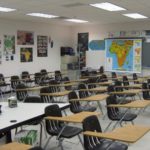Stanford University Diversity Statistics: An In-Depth Look
What’s Covered:
- Overview of Stanford University Diversity Statistics
- Cultural Resources at Stanford
- Plans to Improve Diversity at Stanford
- LGBTQ+ Inclusivity at Stanford
- How Diverse and Inclusive is Stanford, CA?
Stanford University is well known for having top-tier academics not only in the United States, but in the world at large.
But how does Stanford fare in terms of diversity? One of the key aspects of an enriching college experience is diversity. In this post, we’ll go over Stanford’s racial, financial, and geographic diversity, plus the resources offered to help students from diverse backgrounds feel at home.
Overview of Stanford University Diversity Statistics
Undergraduate Ethnic Diversity
|
Student Ethnicity |
Percentage of Students |
|
White |
26% |
|
Asian |
26% |
|
Hispanic/Latino |
18% |
|
International |
11% |
|
Two or More Races |
10% |
|
Black/African American |
7% |
|
American Indian or Alaska Native |
1% |
|
Native Hawaiian or other Pacific Islander |
<1% |
|
Unknown |
<1% |
Faculty Ethnic Diversity
|
Faculty Ethnicity |
Percentage of Faculty |
|
White |
65% |
|
Asian/Asian American |
19% |
|
Hispanic/Latino |
5% |
|
Black/African American |
2% |
|
Multiracial |
2% |
|
American Indian or Alaska Native |
<1% |
According to these student body statistics, Stanford can be categorized as a diverse university when compared to other schools in the United States. However, its faculty makeup is much less diverse, as just over two-thirds of the faculty are white. Men also make up more than 68% of Stanford’s faculty, though women outnumber men (52% to 48%) among the University’s undergraduate students.
Financial Diversity
In 2017, The New York Times reported on the financial standing of Stanford students, which is among the highest in the Pac-12 and in the state of California. Median family income hovers around $167,500, with the average income in the 80th percentile.
|
Share of Students from the… |
Percentage |
|
Top 0.1% |
3.5% |
|
Top 1% |
17% |
|
Top 5% |
39% |
|
Top 10% |
52% |
|
Top 20% |
66% |
|
Bottom 20% |
4% |
Stanford is a need-blind school, meaning the admissions committee makes its decisions without considering a student’s financial circumstances or ability to pay tuition. The college will also meet 100% of demonstrated financial need and is a no-loan college, so if you apply for financial aid and are assessed as having financial need, you won’t be required to take out any loans to meet that need.
Geographic Diversity
Stanford has students from all 50 United States, with 36% of students coming from California, and 50% from the other states—students from all 50 states are found on campus. The remaining 14% of students are international, representing over 70 home countries.
The University is need-blind for most, but not all, international students. Stanford has a limited quantity of financial aid for its international students. Students must obtain a Social Security Number or an Individual Taxpayer Identification Number to receive financial aid.
Cultural Resources at Stanford
Stanford is home to seven centers focused on equity, community, and leadership, all of which provide students the space and support to affirm and explore their identities while learning about the experiences of others. Stanford’s seven centers (as well as some other centers and offices) for equity, community, and leadership include:
- Asian American Activities Center (A3C)
- Black Community Services Center (BCSC)
- El Centro Chicano y Latino
- First Generation and/or Low-Income Student Success Center (FLISSC)
- The Markaz: Resource Center
- Native American Cultural Center (NACC)
- Women’s Community Center (WCC)
- Queer Student Resources (QSR)
- Bechtel International Center
- Office for Religious Life
- Office for Military-Affiliated Communities (OMAC)
Undergraduate Student Organizations
Culture Clubs
- Armenian Students Association
- Asian Women’s Alliance
- Central American Student Association
- Hmong Student Union
- Indian Stanford Student Association
- Japanese Student Union
- Korean-American Student Association
- Lao and Laotian Student Union
- Latinos Unidos de Stanford
- Multiracial Identified Community at Stanford
- Pacific Islander Student Association
- Pilipino American Student Union
- Puerto Rican Student Organization
- Somali Students Association
- Stanford American Indian Organization
- Stanford Inuit Cultural Association
- Stanford Nepali Student Association
- Stanford Queer & Asian
- Stanford South Asian Society
- Taiwanese Culture Society
- Tibetan Student Union
- Undergraduate Chinese American Association
Religious Groups
- Buddhist Community at Stanford
- Catholic Undergraduate Student Association
- Latter-day Saint Student Association
- Muslim Student Union
- Sikh Students Association at Stanford
- Stanford Christian Students
- Stanford Hindu Students Council
Arts and Sports Teams (martial arts, a capella, dance, etc.)
- Aikido Association of Stanford
- Alliance (student-run hip-hop dance team)
- Asian American Theater Project
- Basmati Raas
- Cardinal Ballet Company
- Common Origins (urban/hip-hop dance group)
- JKA Shotokan of Stanford (karate team)
- Kaorihiva (Polynesian dance)
- Kayumanggi Filipino Dance Troupe
- Mua Lac Hong (Vietnamese dance group)
- Noopur (Indian classical dance)
- O-Tone (East Asian a capella group)
- Spicmacay (Indian classical music)
- Stanford Alpine Club
- Stanford Bhangra Team (Indian folk dance)
- Stanford Chinese Dance
- Stanford Dragonboat
- Stanford Fly Fishing and Tying Club
- Stanford Kendo Club (Japanese sword-based martial art)
- Stanford Raagapella
- Stanford Shakespeare Company
- Stanford Spoken Word Collective
- XTRM (K-pop Dance Team)
Social Justice and Service Organizations
- Alternative Spring Break
- Asha for Education
- CS+Social Good
- Engineering Students for Diversity, Equity, and Inclusion
- Social Awareness
- Stanford American Civil Liberties Union
- Stanford FairTrade Collective
- Team HBV
Greek and Professional Life
- Alpha Kappa Delta Phi International Sorority, Inc. (aKDPHi) (international Asian-interest sorority)
- American Indian Science and Engineering Society
- ASES: Stanford’s Global Entrepreneurship Society
- Black in Computer Science at Stanford
- Business Association of Stanford Entrepreneurial Students
- Lambda Phi Epsilon Fraternity, Inc. (Asian American interest fraternity)
- Sigma Psi Zeta Sorority, Inc. (SYZ) (created to support women of color)
- Society for the Advancement of Chicano/Latinos and Native Americans in Science
Other resources and programs available to Stanford students from diverse backgrounds include:
- Mellon Mays Undergraduate Fellowship Program: This program’s intention is to increase the number of students from underrepresented minority groups who pursue and achieve a Ph.D. It is intended for students who want to pursue professional careers, but not medical school, law school, or other professional graduate schools.
- Paul & Daisy Soros Fellowships for New Americans: This program is designed for immigrants, the children of immigrants, refugees, and asylum seekers to get financial support and other types of support during their academic careers.
- Cardinal Connections Weekend: This is Stanford’s interactive program, through which prospective international students can meet current international students.
Plans to Improve Diversity at Stanford
Stanford’s IDEAL (Inclusion, Diversity, Equity & Access in a Learning Environment) is a collection of campus-wide initiatives that aim to ensure that diversity is present in all aspects of the University’s education and research programs. The school wants all members of the campus community to feel supported regardless of their identity, and to have access to any resources they may need. The immediate priorities of the initiatives lie in increasing faculty diversity, improving the campus climate, and advancing free expression on campus.
LGBTQ+ Inclusivity at Stanford
In 2014, Stanford was named the top LBGT-friendly campus in the nation by the Princeton Review. It has since lost this title, but remains relatively highly ranked in terms of LBGTQ+-friendliness.
Queer Student Resources
Most of Stanford’s LBGTQ+ resources are housed under its QSR department. The committee oversees matters of campus inclusivity from gender-neutral bathrooms to support services. A few of them are listed below, but check out their website for a comprehensive look at all the available resources.
Housing
After their first year, students can explore gender-neutral housing options, which are available in all residences with two-room doubles or two-bedroom units. Group members will not be matched randomly, but can instead choose who they wish to live with.
QSpot
Stanford’s Firetruck House is designed to welcome its diverse student population. The second floor is home to QSpot, a place for students of all sexual orientations and gender identities to relax, study, and hang out with other queer and allied students. The center has a library, meeting rooms, a media center, and computers for students to use.
Vaden Health Center
The Vaden Health Center is a safe space for students of all genders and sexualities to get the healthcare they need. The clinicians have specialized training and offer medical services to anyone in the community.
Weiland Health Initiative
The Weiland Health Initiative prioritizes intersectional clinical services, centered around queer experiences. The initiative provides collaborative individual therapy, issue-specific group programming, and consulting for gender-based care.
5-Sure: Students United for Risk Elimination
Like many other college campuses, Stanford has an escort service where students can get a ride to and from various campus locations. This is especially helpful for students who need to travel around late at night.
Stanford LGBTQ Executive Leadership Program
Established in 2016, this one-week program admits LGBTQ+ individuals who are looking to augment their business strategy skills. The program intends for its members to operate in a leadership capacity as people who are not only out, but also visible with their sexuality to authentically lead in a business setting.
All-Gender Restrooms
Stanford has multiple all-gender restrooms spread throughout its campus. The University is aiming to have gender-inclusive single-occupancy restrooms in all of its buildings within the next year or so. Most of the existing facilities are single-stall restrooms, though Stanford plans to make some multi-stall restrooms gender-inclusive with increased privacy features.
Diversity and Access Office
The Diversity and Access Office has a set of non-discrimination policies and resources that oversee and protect Stanford’s students. Students can report their discrimination concerns and grievances by filing a claim through this office.
How Diverse and Inclusive is Stanford, CA?
Stanford is located in Palo Alto, California. Besides being home to the University, Palo Alto is home to the Rodin Sculpture Garden and the Stanford Shopping Center. The town has a population of approximately 16,000 people. The town’s ethnic demographics are as follows:
|
Ethnicity |
Percentage |
|
White |
47.4% |
|
Asian |
26.6% |
|
Hispanic/Latino |
13.6% |
|
International |
11% |
|
Two or More Races |
7.7% |
|
Black/African American |
4% |
|
American Indian or Alaska Native |
<1% |
|
Native Hawaiian or other Pacific Islander |
<1% |
|
Unknown/Other |
<1% |
The area around Stanford University is chock-full of ethnic restaurants, with cuisines such as Japanese, Korean, Italian, and Mediterranean close by. There are also plenty of dining options for those with dietary restrictions, with ample vegetarian and vegan restaurants in the vicinity.
The Stanford area is also relatively LGBTQ+ friendly and provides easy access to San Francisco—often called the “Gay Capital of the U.S.” San Francisco has a well-deserved reputation for its welcoming atmosphere and a long history of being at the forefront of LGBTQ+ rights. It was home to Harvey Milk, the fight against AIDS, and the battle for marriage equality. It also hosts one of the nation’s most recognizable pride celebrations.
The Palo Alto area’s political climate is strongly liberal, and about 73% of Santa Clara County citizens voted Democrat in the last presidential election. Santa Clara County has voted Democrat in the last seven elections. Stanford University itself is also liberal overall, with most students leaning left.
Is Stanford University the Right Fit for You?
While diversity is an important factor in considering prospective schools, there is also a variety of other factors to consider when determining which school is the best fit for you. For example, you should look into a school’s academic programs and see what unique resources they have for the major(s) you plan to pursue. You should also consider extracurriculars, such as the sports culture, available clubs, and campus life.
In fact, there are lots of factors that can help you find your best-fit school, and this can be overwhelming. If you’re not 100% set on Stanford, you should try using our school search tool to discover universities that match up with your interests, as well as our chancing engine to see your chances of getting into them.



